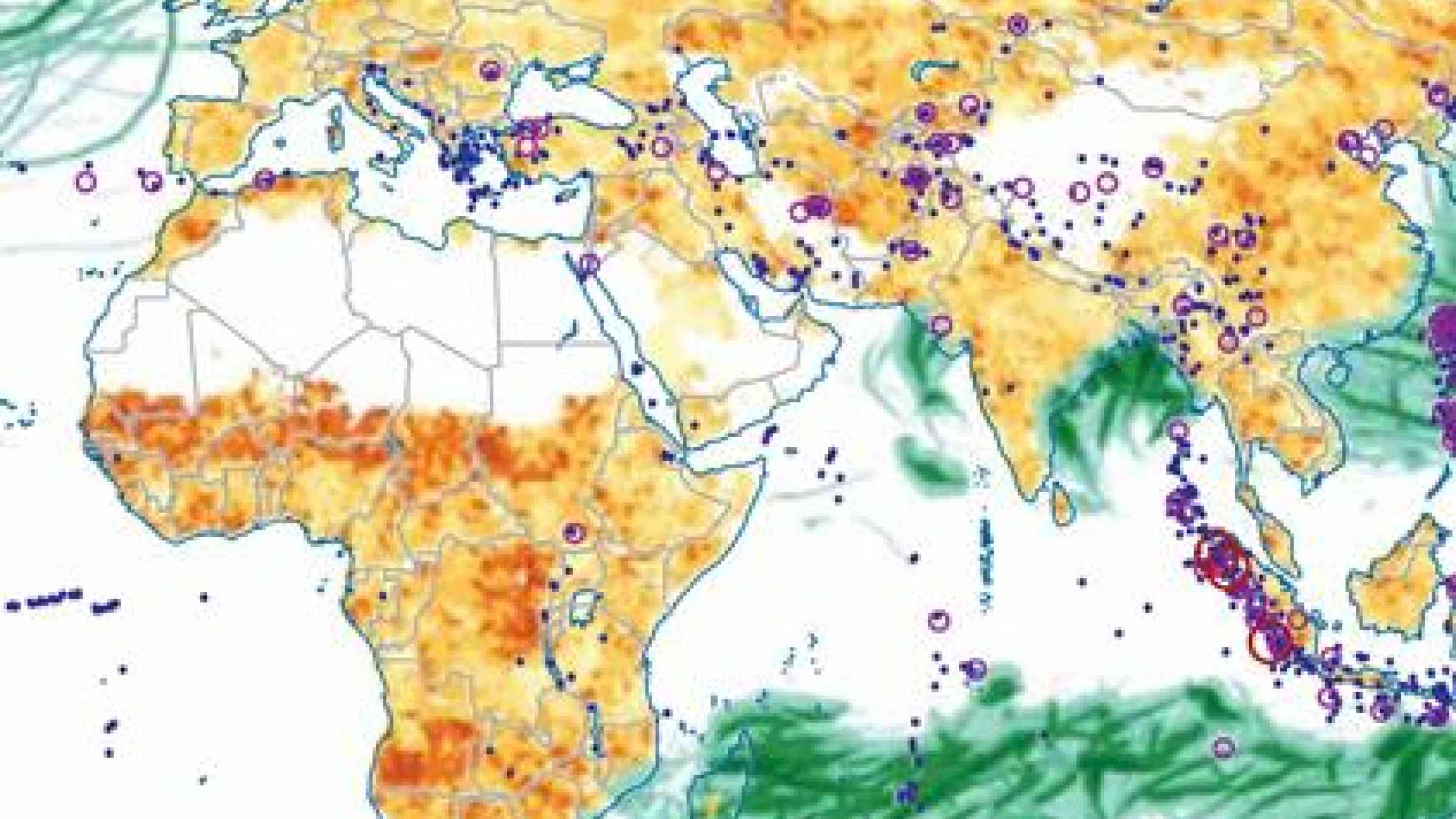Regional launch of World Bank-UN report calling for governments to implement preventive measures to reduce toll of natural disasters

Cairo, September 15, 2011 – Earthquakes, droughts, floods and storms are natural hazards, but these hazards need not result in disasters. The report "Natural Hazards, and Unnatural Disasters: the Economics of Effective Prevention", prepared by the World Bank in partnership with the United Nations and funded by the Global Facility for Disaster Reduction and Recovery, concludes that natural hazards often turn into disasters as a result of poor policies and practices, and examines ways to make prevention cost-effective.
The launch of the report in the Arab region was held under the auspices of the Secretary General of the League of Arab States (LAS), Dr. Nabil El Araby, and gathered leading experts from various disciplines and regional institutions at the LAS premises in Cairo.
“The findings of this report are indeed timely and important to the Arab region,” said Dr. El Araby. “The frequency and impact of disasters are on the rise. While water scarcity is becoming a major threat, climate change is undoubtedly aggravating the situation. This report provides guidelines for regional efforts aiming at reducing vulnerabilities and risks induced by natural hazards. All efforts must be exerted to translate the findings of this report into actual plans on the development agenda of the region"
Natural Hazards, UnNatural Disasters: The Economics of Effective Prevention outlines a number of measures to prevent death and destruction from natural hazards; measures which do not necessarily require governments to spend more, says the report, but to spend better. Cost-effective preventive measures include greater access to hazard-related information and regulatory changes to remove distortions, such as abolishing rent and price controls and providing secure titles to encourage better repair and upkeep of buildings. The report also proposes cost-effective, hazard-specific infrastructure; for examples schools that double as cyclone shelters or roadways that double as drains.
Sometimes increased spending is warranted—for example to develop and maintain early warning systems—and “even modest increases, and greater sharing of data internationally, can have enormous benefits,” says the report.
“Institution building, double-duty infrastructure, and sharing data are all key to preventing disasters,” said Lazlo Lovei, Acting Vice President for the Middle East and North Africa region of the World Bank. “The World Bank’s existing Arab World Initiative (AWI), a partnership with the countries of the region to foster effective cooperation and collaboration in the interests of economic integration and knowledge sharing, could be a powerful impetus for disaster prevention in the region.”
The report—though not alarmist—cautions that growing cities and a changing climate will shape the disaster prevention landscape.
Damages from disasters are projected to grow, making prevention all the more critical. By 2100, even without climate change, damages from weather-related hazards may triple to $185 billion annually and factoring in climate change can then add another $28-$68 billion from tropical cyclones alone. According to the report, property damage between 1970 and 2008 totaled $2,300 billion (in 2008 $US), with earthquakes and droughts causing most of the losses.
Natural Hazards, UnNatural Disasters also shows that growing urbanization will increase exposure to hazards. By 2050 the number of people exposed to storms and earthquakes in large cities could more than double to 1.5 billion. This is also true for the Middle East and North Africa Region, with its rapidly growing cities exposed to many hazards, particularly in coastal areas.
"By 2020, more than 66 percent of the Arab population will be living in cities that face several hazards and stressed resources”, says Amjad Abbashar, Head of the United Nations International Strategy for Disaster Reduction (UNISDR)-Regional Office for Arab States. “As such, Arab governments are encouraged to build on this report's evidence, to identify and analyze the urban risks they face and implement disaster risk reduction measures to protect their economies and future generations. Investing today for a safer tomorrow is not a luxury, it's a life-saving measure."
The report argues that even though exposure will rise, vulnerability need not: much will depend on how cities are managed.
“What we have found is that when prevention is done right, even poor countries in harm’s way have managed to protect their population over time” says Apurva Sanghi, a World Bank Senior Economist and Report Team Leader. “Geography need not be destiny, and the future need not be feared if we start working on disaster prevention today.”
The report was funded by the Global Facility for Disaster Reduction and Recovery (GFDRR), a partnership of 36 countries as well as the ACP Secretariat, the European Commission, the UNISDR and the World Bank.